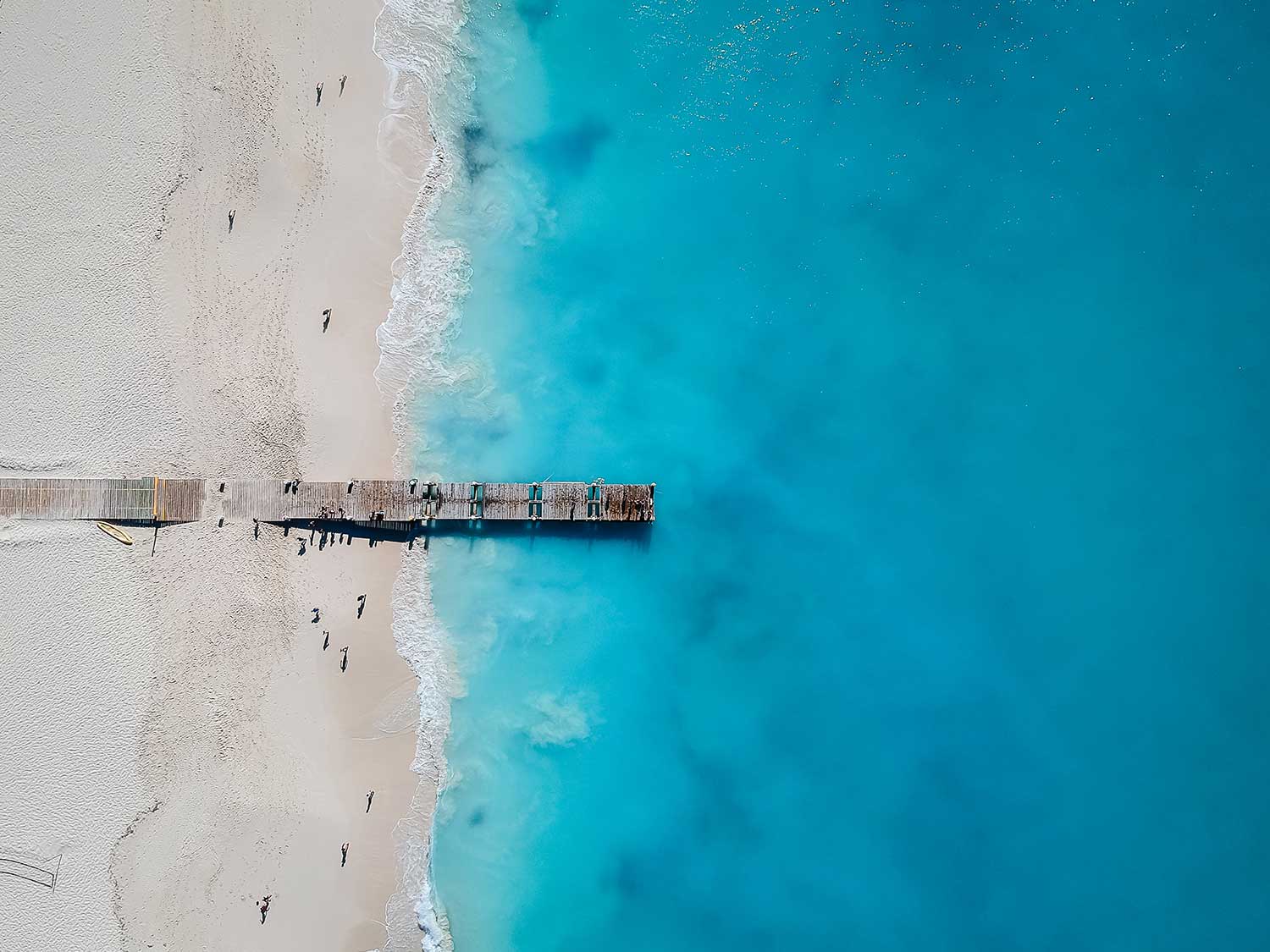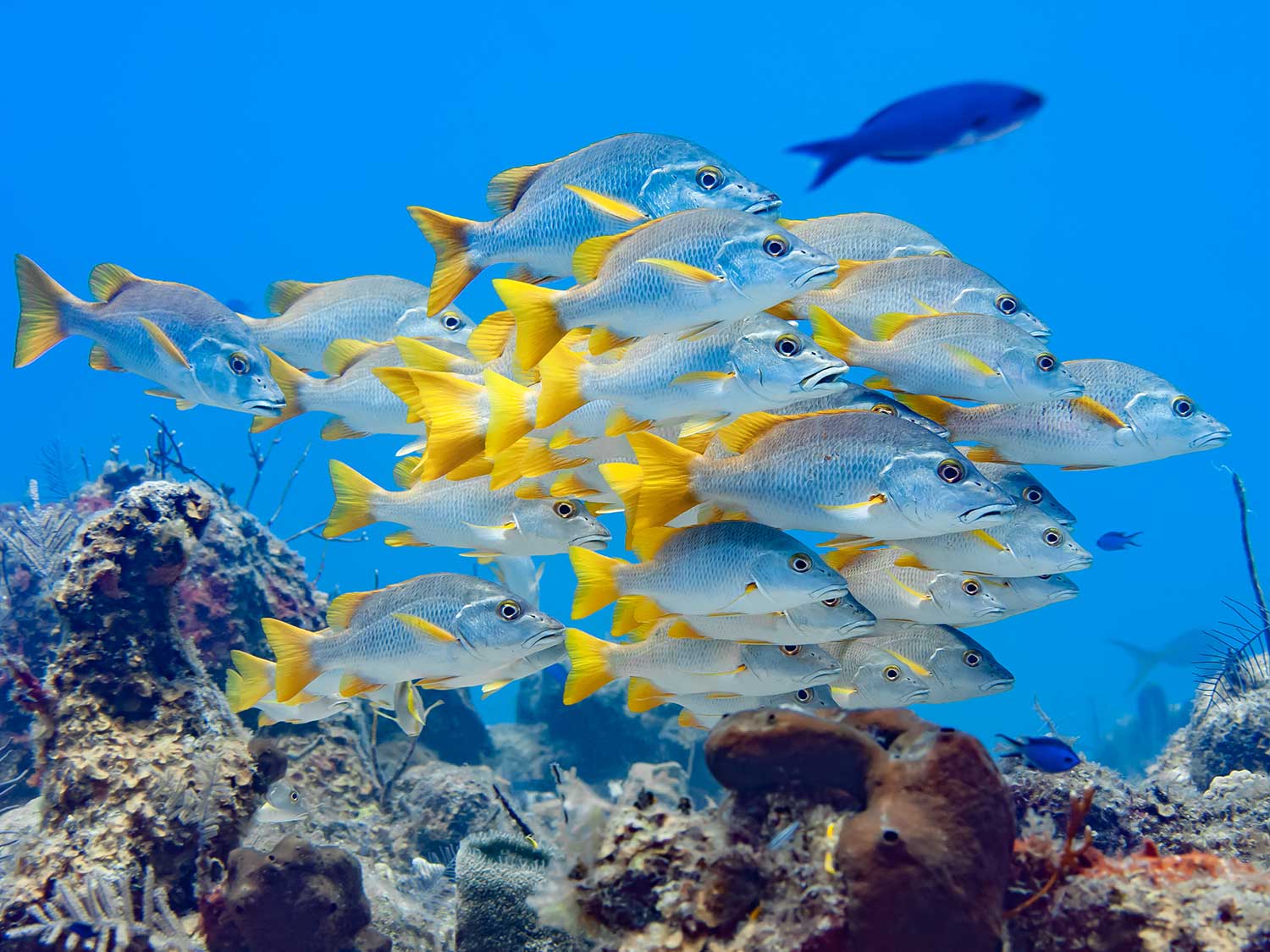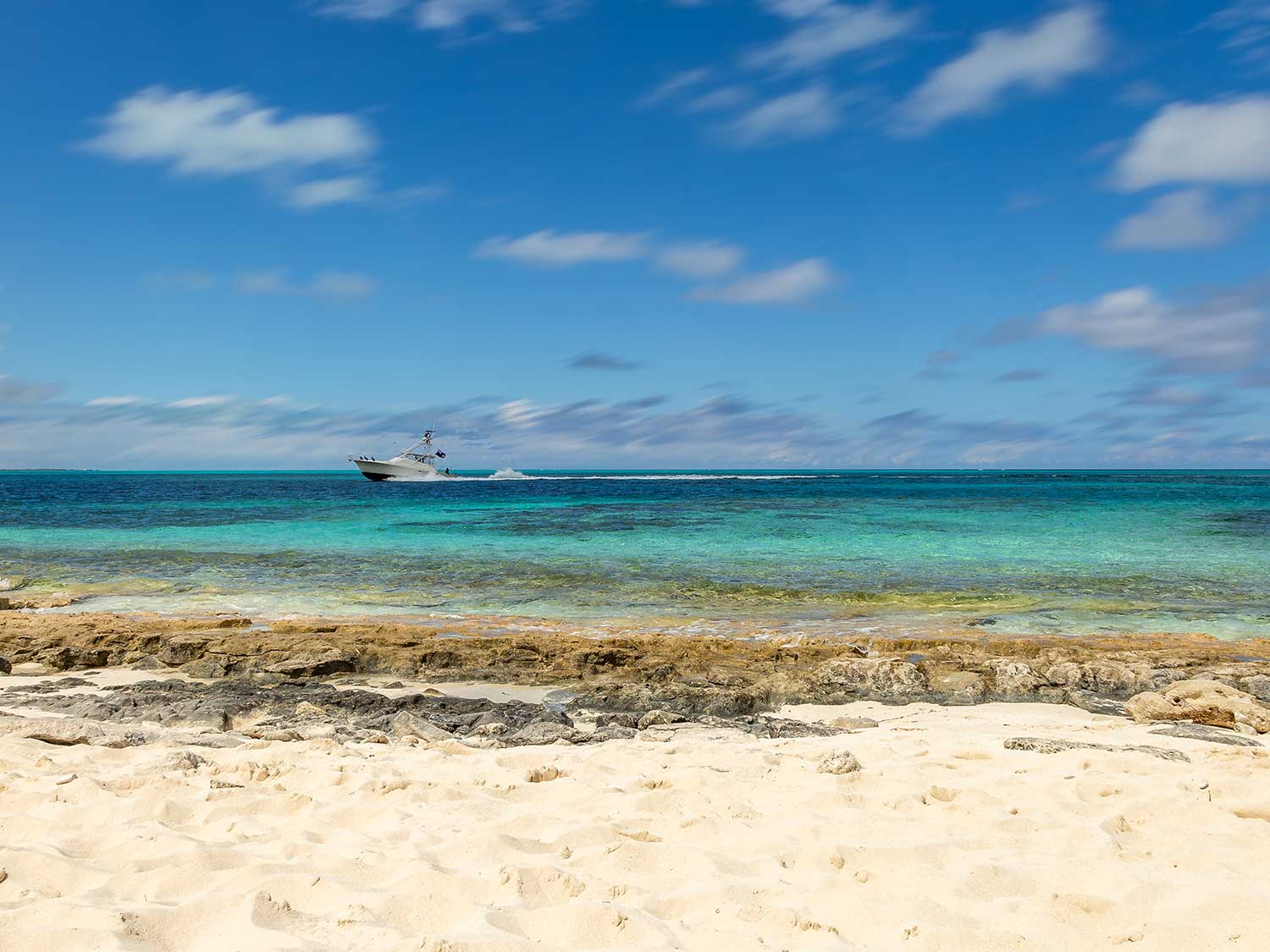The Best Snorkeling In Turks And Caicos
For beginners and experts alike, here are our favorite spots for seeing the best of what’s below the water.
The Turks Islands and the Caicos Islands are separated by a deep channel. Fortunately, warm clear water, vibrant reefs and impressive walls are a common theme. Adjacent to the Turks Island Passage—a happening highway for humpbacks—are quaint Salt Cay and bustling cruise ship fave, Grand Turk.
Meanwhile, resort-filled Providenciales (Provo) in the Caicos sits atop a shallow plateau where swimmers can stroll out from shore for miles in waist-to-chest deep water. However, the Caicos' extensive barrier reef drops to dramatic walls and ridges featuring plentiful life for snorkelers to enjoy.
Caicos Banks
Best reached by boat, many dive operations offer itineraries suitable for snorkelers, while some sailing charters cater specifically to the best shallow sites for a floating safari. French Cay is popular for those hoping to spot a grey reef or nurse shark. This former pirate haunt offers great birdwatching and better chances of seeing larger sea animals such as dolphin and eagle rays.
South of the Banks, Little Ambergris Cay, is a wetland nature reserve and lovely spot for enjoying birdlife and rock iguanas on land, while bonefish, sharks, stingrays, turtles and conch nestle among tropical fish off the shore.
Provo, The Bight Reef (Coral Gardens)
While other T and C reefs' background vistas might top this 350-foot ridge of coral in vibrancy, its close-to-the-beach location and shallow waters (15-20 feet) make it a popular locale for spotting stoplight parrotfish, blue parrotfish, bar jacks, Nassau groupers, queen angelfish, butterflyfish, barracudas, porcupine-fish, trumpetfish, squirrelfish, yellowtail snapper, queen triggerfish, sergeant majors, damselfish, scrawled filefish, schoolmasters, trunkfish, and yellow goatfish.
If this long list of marine life doesn't impress, add in a few green and hawksbill turtles, as well as southern brown stingrays and the occasional spotted eagle ray cruising past the pure white sand.
Grand Turk, Gibb’s Cay
Stingray City, as they say, and they would not be exaggerating. These velvet soft, friendly creatures have learned well where their bread is buttered, and though "wild" in the sense of being untethered or enclosed, schools of the rays will rush approaching boats to interact with snorkelers (hoping for a squid-ish handout). Many tours pair this activity with conch diving.
As one of the most popular cruise excursions, if you are angling to get some quiet ray time, local guides know the ship schedules and can plan a less busy opportunity during your stay.
Provo, Smith’s Reef
Located near Turtle Cove on the north coast of Providenciales, it's a fair hike (but certainly doable at 3.5-meters) from Grace Bay. Outer reefs are easily accessible from shore, with stoplight parrotfish, turtles, stingray, queen angelfish, French angelfish, porcupine fish, trumpetfish, French grunts, filefish, bluehead wrasse, indigo hamlets, horse-eye jacks, barracudas awaiting snorkeler.
For those looking to amp up the experience, this is a popular spot for night snorkeling, using dive flashlights. Though the colorful hard and soft corals, sea fans and sponges fade into the background at night, spiny lobsters, slipper lobsters, spotted moray eels, octopus, squid and channel crabs are out feeding and exhilarating to watch.
West Caicos Marine National Park
Nearly a thousand acres of protected area off the west coast of West Caicos, this park is home to several of the country's top dive sites, excellent snorkeling and interesting geology. The purest of light aqua water mocks most country's best postcards, with the perfect patterns of light and ripples of white sand playing backdrop to Elkhorn coral, purple and yellow sea fans and colorful reef fish.
Set off the main bulk of islands, it's possible to see stingrays, eagle rays, nurse sharks and turtles glide by as well.


